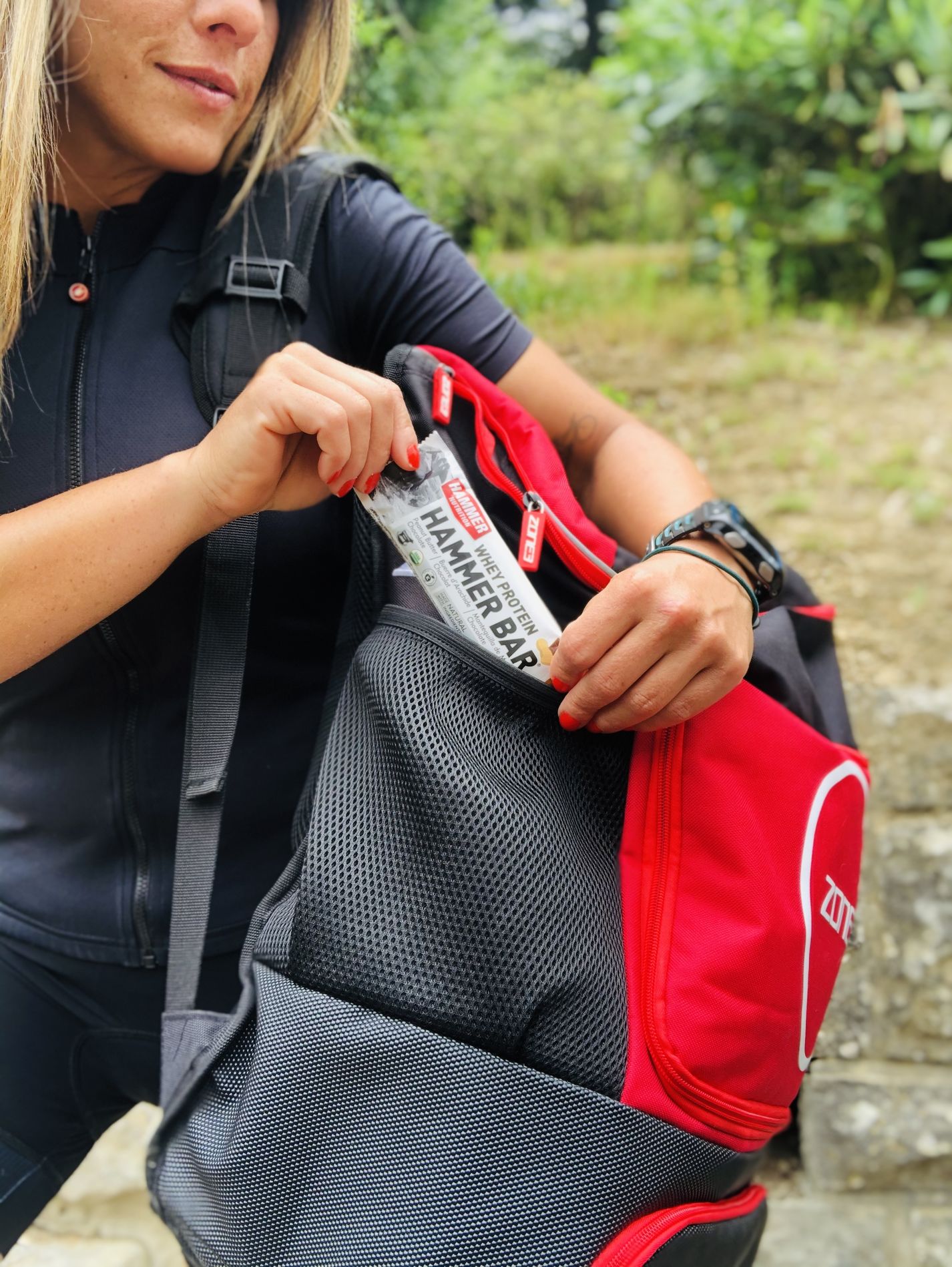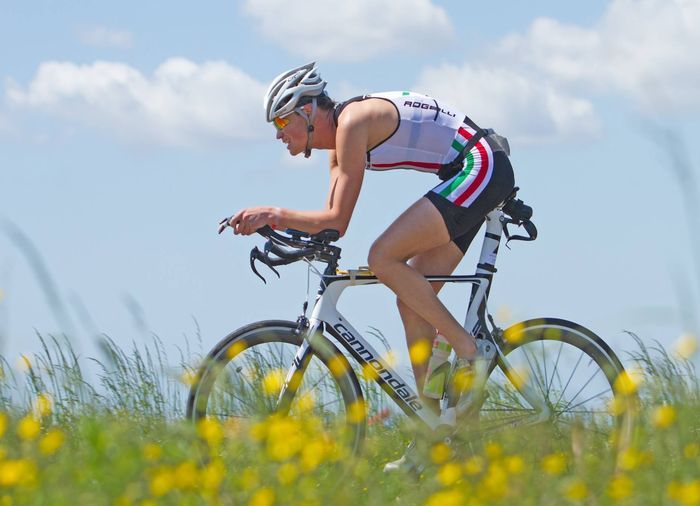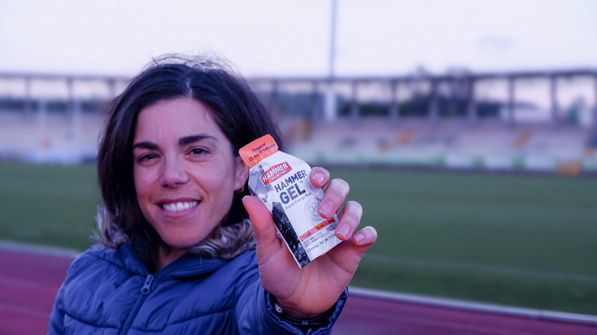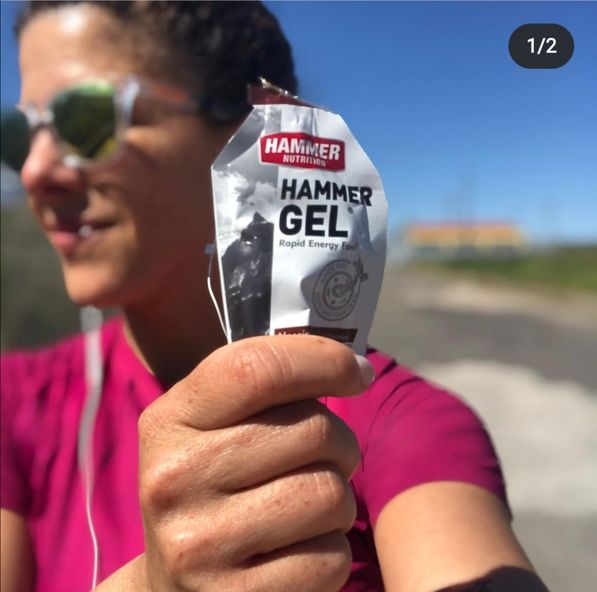CALORIC INTAKE
THE RACER'S EDGE: CALORIES
Our fueling recommendations for most athletes during exercise:
-
Consume 120-180 calories (30-45 gram carbs) per hour
-
Fuel with complex carbohydrates, such as maltodextrin, not simple sugars or a blend
-
After 2 hours, your fuel should include protein in a ratio of about 8:1 (carbs to protein).

SECRET#3: CALORIES COUNT!
What and how much you consume during exercise can make the difference between a PR and a DNF.
Endurance and ultra-endurance athletes require carbohydrates, protein, and fat—all three forms of fuel that the human body uses —for optimal performance. Like every aspect of success in endurance events, proper nutrition requires planning, practice, and training to reap the benefits on race day. Here’s the inside track on proper fueling for best performance and superior health.

Need an inside track on proper fueling for best performance and superior health? Well, keep on reading:

#1 - CARBOHYDRATES
As all athletes know, “carbs are king” when it comes to fueling for endurance exercise. But you can’t consume just any carbohydrate at any time. Depending on what you use, carbohydrates can either help or hinder performance. Here’s what works:
-
Complex carbohydrates: steady, usable energy without stomach distress - Products containing simple sugars—typically sucrose, fructose, and/or glucose (dextrose)—must be extremely diluted or your body can’t digest them. That’s due to “osmolality,” a chemical measure of the concentration of a solution’s dissolved particles that can permeate a cell membrane. (For more details on this important factor, see The Endurance Athlete’s Guide to Success.)
The trouble is, at this weak concentration (6-8%), not enough energy is available for working muscles. To obtain enough calories during exercise, you would have to consume about two bottles of fuel per hour, increasing your risk of fluid intoxication. But if you were to consume simple sugars at a higher concentration, digestion would slow or cease, causing gastric problems and the potential for muscle cramps.
In contrast, complex carbohydrates can be digested readily at a much higher concentration. At a solution concentration of up to 18%, complex carbohydrates can pass efficiently from the digestive tract to the liver. The liver then converts some of the fuel to glycogen for storage and some of it directly to glucose for immediate use by muscles. Complex carbohydrates (including the maltodextrin in Hammer Nutrition’s HEED and Hammer Gels) allow you to absorb more calories for use as energy than you can from simple sugars.
-
Maltodextrin: fast energy without the crash - With a glycemic index (GI) of about 130, maltodextrin elevates blood sugar level rapidly, and that’s desirable during exercise—as long as calorie intake is within the recommended 120-180 cal/hr range. (GI is a measure of the speed at which the body breaks down a carbohydrate into glucose.) In comparison, the GI value of glucose is 100, and sucrose is just 62. But while maltodextrin elevates blood sugar levels rapidly, it does not cause fluctuation in insulin levels the way simple sugars do. Simple sugars, even in small amounts, can incite spikes in insulin. That sudden recruitment of insulin then causes a subsequent, dramatic drop in blood sugar levels, even below the fasting level! This “flash and crash” type of energy typically results in the dreaded “bonk.” Maltodextrin raises blood insulin more effectively than simple sugars, without causing the crash of simple sugars.
-
Avoid multiple carbohydrate sources during exercise - Some sports fuels contain a blend of carbohydrates, based on research conducted by the Dutch sports scientist Asker Jeukendrup. Jeukendrup found that consuming a carbohydrate blend increased oxidation rates, indicating higher energy production. However, most of the study subjects cycled at a low-intensity pace—only 50-55% maximum power output—at which you could digest almost anything without gastric issues. In our nearly three decades of working with athletes engaged in typical 75-85% efforts, and/or multi-hour endurance events, fueling with a combination of simple sugars and complex carbohydrates in amounts higher than about 4.0-4.6 calories per minute did not yield positive results. They only increased performance-inhibiting, stomach-related maladies.

#2 - FATTY ACIDS
The typical athlete has a vast reserve of calories (up to 100,000!) available from fat stores. When exercise goes beyond about two hours, these fatty acids are the fuel of choice, providing approximately 60-65% of your caloric expenditure. However, for this process to smoothly, you must not consume excess calories (no more than about 180 calories per hour) during exercise. If you try to match energy losses with caloric replacement from your fuel, you will inhibit the efficient utilization of fats for fuel.

#3 - PROTEIN
After 90-120 minutes of exercise, about 5-15% of the calories you use will come from protein. If your fuel doesn’t supply this protein, your body will scavenge it from muscle tissue—causing muscle fatigue and depletion, post-exercise soreness, and a weakened immune system. To avoid this protein cannibalization, your ingested fuel should incorporate protein in a ratio of about 8:1 (by weight) carbs to protein. Sustained Energy, Perpetuem, and Perpetuem Solids meet this requirement and are your best fuel choices for long-duration exercise. Although whey protein is excellent for use after exercise, soy is the preferred protein for use during prolonged exercise.
Soy protein used during long-duration events:
-
does not readily produce ammonia, a primary factor in premature fatigue
-
is easy to digest
-
has an excellent profile of amino acids. including the beneficial branched-chain amino acids (BCAAs), which your body readily converts for energy
Bottom line
For exercise that lasts less than two hours, a complex carbohydrate fuel that contains maltodextrin (Heed and Hammer Gels) should perfectly meet your energy needs. For exercise beyond two or three hours, we recommend a “carb + protein” fuel (Sustained Energy or Perpetuem), either as your sole fuel from beginning to end, or as your primary fuel. Remember: you can’t replace calories at the same rate you use them during exercise. Instead, aim to replenish them at the rate of 120-180 calories per hour. You can always add a bit more, if necessary.
FUEL LEAN: 120-180 CAL/U
FACT: Your body can’t process calories in an amount that approaches what it expends during athletic activity. If you want to achieve your best performance, DO NOT follow the “calories out, calories in” protocol recommended by some “experts.”
Instead, replenish calories in body cooperative amounts. Your fat stores will easily make up the difference. For most athletes, 120-180 calories/hour will be the ideal range. Fewer calories per hour can be processed while running, so adjust accordingly. In very rare instances, larger athletes and people with very high metabolic rates may need more than 180 calories per hour. It’s always better to err on the side of taking in too few calories, as you can always easily add them.

THE FAST LANE
Complex carbohydrates such as maltodextrin allow you to absorb more calories for use as energy than you can from simple sugars.
Maltodextrin raises blood insulin more effectively than simple sugars, without the rapid drop common with simple sugars.
Replenish calories in amounts that support efficient energy production and that don’t interfere with the use of fatty acids for fuel: 120-180 cal/hr.
After about 2 hours of exercise, about 5-15% of calories used come from protein (whether from fuel or muscles).
Soy is the preferred protein for use during exercise because its metabolization doesn’t readily produce ammonia, a factor in fatigue.
For 2-3-hour events in challenging conditions (e.g., running in hotter weather and/or steep terrain), when digestion is more difficult, a “carb only” fuel may be a better choice than a carb-protein fuel.

FUELING FOR 2-3 HOUR EVENTS
Optimum fueling for a race in the 2- to 3-hour range is not totally clear-cut. Your decision to use either a “carb + protein” fuel (Sustained Energy or Perpetuem) or a “carb only” fuel (HEED or Hammer Gel) should be based on the type of race, intensity of your effort, weather and acclimation, and the terrain.
Running is more “digestively challenging” than cycling, for instance. Competing at a fast pace, racing in hot weather, and/or competing in an even that requires lots of climbing all can reduce digestive ability too. When these factors come into play, it’s usually better to choose a fuel that’s quick to digest: HEED or Hammer Gel. Although some ammonia build-up (and muscle breakdown) will begin due to the lack of protein in the fuel, the race will be over before it becomes too problematic.






